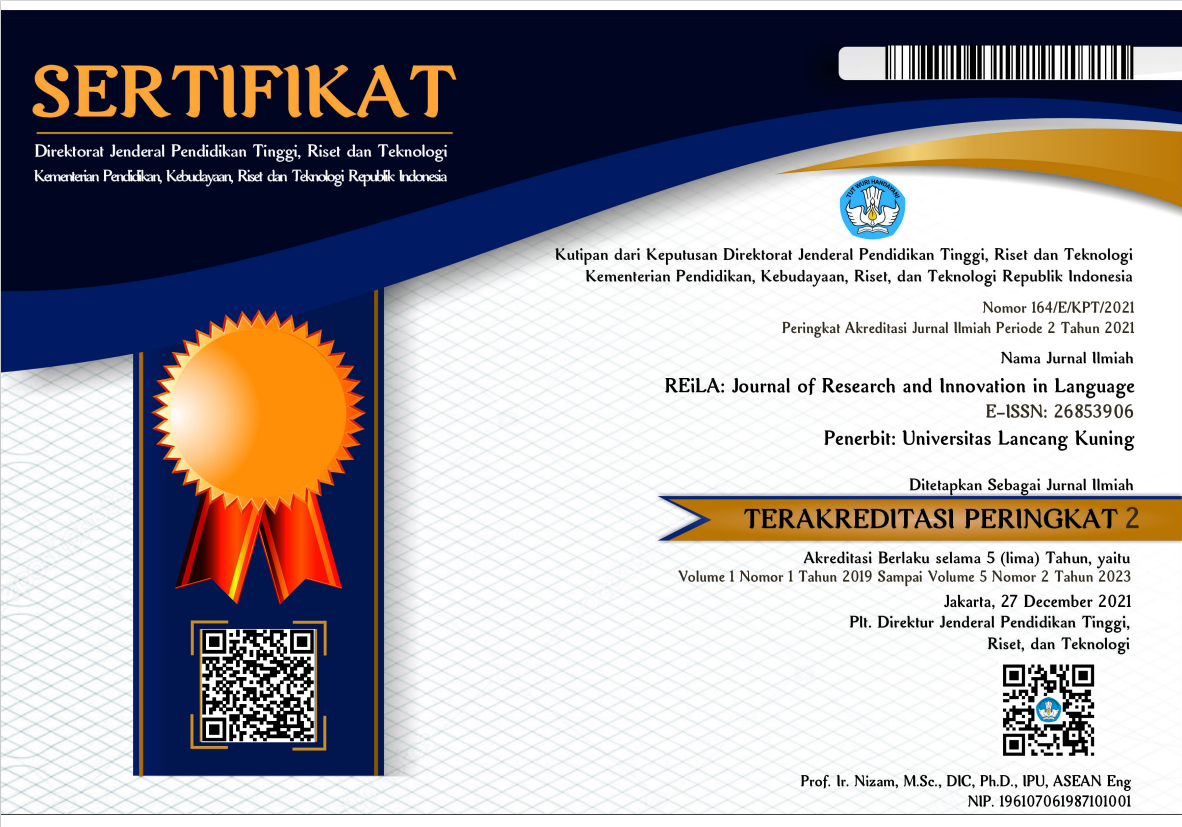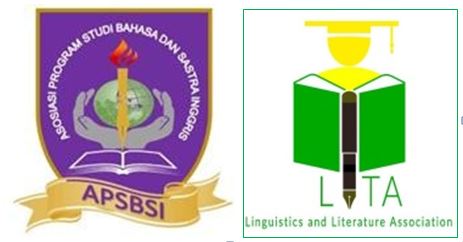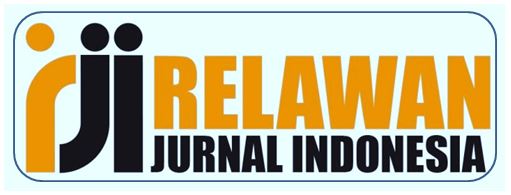English as a Lingua Franca in the Eyes of Indonesian In-service Teachers: Attitudes and Beliefs
Abstract
Based on the premise that teachers are at the forefront of global multilingual cultural awareness agencies, the research on their views toward English as a Lingua Franca (ELF) concepts is critical. This study investigated the attitudes and beliefs of 120 in-service secondary teachers toward ELF in Indonesia. It employed a mixed-method design. Research data was collected using a questionnaire and semi-structured interviews. Thematic coding analysis was used to interpret qualitative data. The results indicated teachers' positive changes in attitudes and beliefs in five ELF categories: the presence of multilingual characters and pronunciation model used in the classroom, learning goals, the roles of language and culture, and the language used in the classroom and the assessment. Challenges to welcoming the ELF perspective in classroom practices identified in the study were government policy, parental support, and individual teachers' reflection on the current position of English in the global discourse, primarily since beliefs on the superiority of native English speakers were found to be strong. This study suggests that teachers’ awareness in designing sensitive instructions and materials to welcome lingua cultural varieties would improve the understanding of transpiring changes in the global sociolinguistic landscape. Government intervention is called for to provide cheaper and more accessible materials representing English variations.
Downloads
References
Baker, W. (2015a). Culture and identity through English as a lingua franca: rethinking concepts and goals in intercultural communication. De Gruyter Mouton.
Baker, W. (2015b). Culture and complexity through English as a lingua franca: rethinking competences and pedagogy in ELT. Journal of English as a Lingua Franca, 4(1), 9-30. https://doi.org/10.1515/jelf-2015-0005
Bolton, K., & Bacon-Shone, J. (2020). The statistics of English across Asia. In K. Bolton, W. Botha., & A. Kirkpatrick (Eds.), The handbook of Asian Englishes (pp. 49-80). https://doi.org/10.1002/9781118791882.ch3
Braun, V, & Clarke, V. (2012). Thematic Analysis. In H. Cooper (Ed.), APA Handbook of Research Methods in Psychology (pp. 57-71). The American Psychological Association.
Canagarajah, A. S. (2006). Negotiating the local in English as a lingua franca. Annual Review of Applied Linguistics, 26(1), 197–218. https://doi.org/10.1017/S0267190506000109
Cenoz, J. (2019). Translanguaging pedagogies and English as a lingua franca. Language Teaching, 52(1), 71-85. https://doi.org/ 10.1017/S0261444817000246
Cenoz, J., & Gorter, D. (2017). Translanguaging as a pedagogical tool in multilingual education. In J. Cenoz, D. Gorter., & S, May (Eds.), Language awareness and multilingualism (pp. 309-321). Springer. http://dx.doi.org/10.1007/978-3-319-02240-6_20
Chan, J. Y. H. (2019). The choice of English pronunciation goals: different views, experiences and concerns of students, teachers and professionals, Asian Englishes, 21(3), 264-284. https://10.1080/13488678.2018.1482436
Cogo, A. (2009). Accommodating difference in ELF conversations: A study of pragmatic strategies. In A. Mauranen & E. Ranta (Eds.), English as a Lingua Franca. Studies and Findings (pp. 254-273). Cambridge Scholars Publishing.
Cogo, A. & M. Dewey. (2006). Efficiency in ELF communication: From pragmatic motives to lexico-grammatical innovation. Nordic Journal of English Studies, 5(2), 59–93.
Creswell, J. W., Plano Clark, V. L., Guttman, M., & Hanson, W. (2003). Advanced mixed methods research designs. In A. Tashakkori & C. Teddlie (Eds.), Handbook of mixed methods in the behavioral and social sciences (pp. 209–40). Sage Publications.
Curran, J. E., & Chern, C. (2017). Pre-Service’s English teachers’ attitudes towards English as a lingua franca. Teaching and Teacher Education. 66, 136-147. https://doi.org/10.1016/j.tate.2017.04.007
Deterding, D. (2013). Misunderstandings in English as a Lingua Franca: An analysis of ELF interactions in South-East Asia. De Gruyter Mouton.
Dewey, M. (2012). Towards a post-normative approach: learning the pedagogy of ELF. Journal of English as a Lingua Franca, 1(1). 141–170. https://doi.org/10.1515/jelf-2012-0007
Dörnyei, Z. (2007). Research methods in applied linguistics. Oxford University Press.
Galloway, N. (2018). ELF and ELT teaching materials. In J. Jenkins, W. Baker, & M. Dewey (Eds.), The Routledge handbook of English as a Lingua Franca (pp. 468-480). Routledge.
Galloway, N., & Numajiri, T. (2020). Global Englishes Language Teaching: Bottom-up curriculum implementation. Tesol Quarterly, 54(1), 118-145. https://doi.org/10.1002/tesq.547
Galloway, N & H. Rose. (2015). Introducing Global Englishes. Routledge.
Garcı´a, O., & Wei, L. (2014). Translanguaging: Language, Bilingualism and Education. Palgrave Macmillan.
Garrett, P. (2010). Attitudes to language. Cambridge University Press.
Harding, L. (2012). Accent, listening assessment and the potential for a shared-L1 advantage: A DIF perspective. Language Testing, 29(2). 163–180. https://doi.org/10.1177%2F0265532211421161
Harding, L. (2015). Adaptability and ELF communication: The next steps for communicative language testing? In J. Mader & Z. Urkun (Eds.), Language testing: Current trends and future needs. IATEFL TEASIG.
Harding, L. & T. McNamara. (2018). Language assessment: The challenge of ELF. In J. Jenkins, W. Baker, & M. Dewey (Eds.), The Routledge handbook of English as a Lingua Franca (pp. 456-467). Routledge.
Hu, G., & McKay, S. L. (2014). Multilingualism as portrayed in a Chinese English textbook. In J. Conteh & G. Meier (Eds.), The multilingual turn in languages education: Opportunities and challenges (pp. 64–88). Multilingual Matters.
Ishikawa, T. (2017). Conceptualising English as a global contact language. Englishes in Practice, 4(2), 31-49. https://doi.org/10.1515/eip-2017-0002
Jenkins, J. (2002). A sociolinguistically based, empirically researched pronunciation syllabus for English as an international language. Applied Linguistics, 23(1), 83-103. https://doi.org/10.1093/applin/23.1.83
Jenkins, J. (2007). English as a Lingua Franca: Attitudes and identity. Oxford University Press.
Jenkins, J., Cogo, A., & Dewey, M. (2011). Review of developments in research into English as a lingua franca. Language Teaching, 44(3). 281–315. https://doi.org/10.1017/S0261444811000115
Jenkins, J. ( 2015). Repositioning English andmultilingualism in English as a Lingua Franca. Englishes in Practice, 2, 49–85.
Jenkins, J. (2017). English as a Lingua Franca in the expanding circle. In M. Filppula, J. Klemola, & D. Sharma (Eds.), The Oxford Handbook of World Englishes (pp. 550-566). Oxford University Press.
Jenkins, J., & Leung, J. (2019). From mythical ‘standard’ to standard reality: The need for alternatives to standardised English language tests. Language Teaching, 52(1). 86–110.
Jung, M-Y. (2010). The intelligibility and comprehensibility of World Englishes to non-native speakers. Journal of Pan–Pacific Association of Applied Linguistics, 14(2), 141-163.
Kachru, B. (1992). The Other Tongue: English across cultures. University of Illinois Press.
Ke, I.-C. & Cahyani, H. (2014). Learning to become users of English as a Lingua Franca (ELF): How ELF online communication affects Taiwanese learners' beliefs of English. System, 46, 28-38. https://doi.org/10.1016/j.system.2014.07.008
Kim, D. (2013). Mixed methods. In C.A. Chapelle (Ed.), The Encyclopedia of Applied Linguistics, (pp. 3687- 3695). Blackwell/Wiley. https://doi.org/10.1002/9781405198431
Kirkpatrick, A. (2011). English as an Asian Lingua Franca and the multilingual model of ELT. Language Teaching, 43(1), 212-224. https://doi.org/10.1017/S0261444810000145
Kirkpatrick, A., & Sussex, R. (2012). Introduction. In A. Kirkpatrick & R. Sussex (Eds.), English as an International Language in Asia: Implications for Language Education (pp.1-12). Springer. https://doi.org/10.1007/978-94-007-4578-0_1
Kirkpatrick, A. (2013). Learning English in ASEAN: Myths and principles. In R. Stroupe & K. Kimura (Eds.), Research and Practice in English Language Teaching in Asia (pp.14-24). Language Education in Asia.
Kusumaningputri, R., & Widodo, H. P. (2018). Promoting Indonesian university students' critical intercultural awareness in tertiary EAL classrooms: The use of digital photograph-mediated intercultural tasks. System, 72, 49-61. https://doi.org/10.1016/j.system.2017.10.003
Lai, M. L. (2020). “English as a Lingua Franca”: Rhetoric or Reality? Attitudes of Prospective English Teachers in Post-colonial Hong Kong. Asian Studies Review, 44(3), 1-21. https://doi.org/10.1080/10357823.2019.1693977
Larsen-Freeman, D. (2011). A complexity theory approach to second language development/acquisition. In D. Atkinson (Ed.), Alternative approaches to second language acquisition (pp. 48–72). Routledge.
Louw, S., Todd, R. W., & Jimarkon, P. (2014). Teacher trainers’ beliefs about feedback on teaching practice: Negotiating the tensions between authoritativeness and dialogic space. Applied Linguistics, 37(6), 745-764. https://doi.org/10.1093/applin/amu062
Luo, W. H. (2016). Teacher perceptions of teaching and learning English as a Lingua Franca in the expanding circle: A study of Taiwan. English Today, 33(1), 2-11. https://doi.org/10.1017/S0266078416000146
Matsumoto, Y. (2011). Successful ELF communications and implications for ELT: Sequential analysis of ELF pronunciation negotiation strategies. Modern Language Journal, 95(1), 97–114. https://doi.org/10.1111/j.1540-4781.2011.01172.x
Mauranen, A. (2012). Exploring ELF. Academic English Shaped by Non-native Speakers. Cambridge University Press.
McArthur, T. (2003). English as an Asian language. English Today, 19(2), 19–22. https://doi.org/10.1017/S0266078403002049
McGrath, I. (2013). Teaching materials and the roles of EFL/ESL teachers: Practice and theory. Bloomsbury.
Murata, K., & Jenkins, J. (2009). Global Englishes in Asian contexts: Current and future debates. Palgrave Macmillan.
Nguyen, T. T. M., Marlina, R., & Cao, T. H. (2020). How well do ELT textbooks prepare students to use English in global contexts? An evaluation of the Vietnamese English textbooks from an English as an International Language (EIL) perspective. Asian Englishes, 1–17. https://doi.org/10.1080/13488678.2020.1717794.
Onwuegbuzie, A. J., & Collins, K. M. T. (2007). A typology of mixed methods sampling designs in social science research. The Qualitative Report, 12(2), 281-316.
Pajares, M. F. (1992). Teachers’ beliefs and educational research: Cleaning up a messy construct. Review of Educational Research, 62(3), 307-332. https://doi.org/10.3102%2F00346543062003307
Porto, M. (2010). Culturally responsive L2 education: An awareness-raising proposal. ELT Journal, 64(1), 45-53. https://doi.org/10.1093/elt/ccp021
Pudyastuti, Z. E., & Atma, N. (2014). Englishes: Indonesian EFL teachers’ perception. Parole: Journal of Linguistics and Education, 4(1), 76-82.
Putra, T. K., Rochsantiningsih, D, D., & Supriyadi, S. (2020). Cultural representation and intercultural interaction in textbooks of English as an international language. Journal on English as a foreign language, 10(1), 163-184. https://doi.org/10.23971/jefl.v10i1.1766
Rose, H., & Galloway, N. (2019). Global Englishes for language teaching. Cambridge University Press
Sa’d, S. H. T. (2018). Learners’ views of (non) native speaker status, accent, and identity: An English as an International Language perspective. Journal of World Languages. 5(1), 1-22. https://doi.org/: 10.1080/21698252.2018.1500150
Seidlhofer, B. (2011). Understanding ELF. Oxford University Press.
Schon, D. A. (1996). Educating the reflective practitioner: Toward a new design for teaching and learning in the professions. Jossey-Bass, Inc.
Sercu, L. (2006). The foreign language and intercultural competence teacher: The acquisition of a new professional identity. Intercultural Education, 17(1), 55–72.
Setyono, B., & Widodo, H. P. (2019). The representation of multicultural values in the Indonesian Ministry of Education and Culture endorsed EFL textbook: A critical discourse analysis. Intercultural Education, 33(4), 383-397. https://doi.org/10.1080/14675986.2019.1548102
Sifakis, N. C. (2017). ELF awareness in English language teaching: Principles and processes. Applied Linguistics, 40(2), 288-306. https://doi.org/10.1093/applin/amx034
Sifakis, N., & Y. Bayyurt. (2018). ELF-aware teaching, learning and teacher development. In J. Jenkins, W. Baker, & M. Dewey (Eds.), The Routledge handbook of English as a Lingua Franca (pp. 456-467). Routledge.
Strobbe, L., Wildt, A. V., Avermaet, P. V., Gorp, K. V., Branden, K. V., & Houtte, M. V. (2017). How school teams perceive and handle multilingualism: The impact of a school's pupil composition. Teaching and Teacher Education, 64, 93-104. https://doi.org/10.1016/j.tate.2017.01.023
Sung, C. C. M. (2018). Investigating perceptions of English as a Lingua Franca in Hong Kong: The case of university students: Insights into complexity of ELF perceptions in the era of globalisation. English Today, 34(1), 38-44. https://doi.org/10.1017/S0266078417000293
Suzuki, A. (2011). Introducing diversity of English into ELT: Student teachers' responses. ELT Journal, 65, 145-153. https://doi.org/10.1093/elt/ccq024
Syrbe, M., & Rose, H. (2018). An evaluation of the global orientation of English textbooks in Germany. Innovation in Language Learning and Teaching, 12(2), 152–163.
Teddlie, C., & Yu, F. (2007). Mixed methods sampling: A typology with examples. Journal of Mixed Methods Research, 1(1), 77-100. https://doi.org/10.1177/1558689806292430
Wang, Y., & Jenkins, J. (2016). Nativeness and intelligibility: Impacts of intercultural experience through English as a Lingua Franca on Chinese speakers’ language attitudes. Chinese Journal of Applied Linguistics, 39(1), 38–58. https://doi.org/10.1515/cjal-2016-0003
Wenden, A. L. (1998). Metacognitive knowledge and language learning. Applied Linguistics, 19(4), 515-537. https://doi.org/10.1093/applin/19.4.515
Widodo, H. P., & Fang, F. (2019). Global Englishes-oriented English language education. In F. Fang & H. P. Widodo (Eds.), Critical Perspectives on Global Englishes in Asia: Language policy, curriculum, pedagogy and assessment (pp. 194-200). Multilingual Matters.
Widodo, H. P., Wood, A., & Gupta, D. (2017). Asian English language classrooms: When theory and practice meet. Routledge.
Young, T. J., & Walsh, S. (2010). Which English? Whose English? An investigation of “non-native” teachers’ beliefs about target varieties. Language, Culture and Curriculum, 23(2). 123–137. https://doi.org/10.1080/07908311003797627
Zacharia, N. T. (2016). Exploring identity construction of student teachers practicing ELF pedagogy in a microteaching course. Journal of Asian Pacific Communication, 26(2), 321-339. https://doi.org/10.1075/japc.26.2.08zac
Zein, S., Sukyadi, D., Hamied, F. A., & Lengkanawati, N. S. (2020). English language education in Indonesia: A review of research (2011–2019). Language Teaching, 53(4), 491-523. https://doi.org/10.1017/S0261444820000208
Zhang, X. (2021). Investigating student teachers’ perceptions of English as a Lingua Franca and Its teaching in Mainland China, Asian Englishes. 1-16. https://doi.org/10.1080/13488678.2021.1926647










